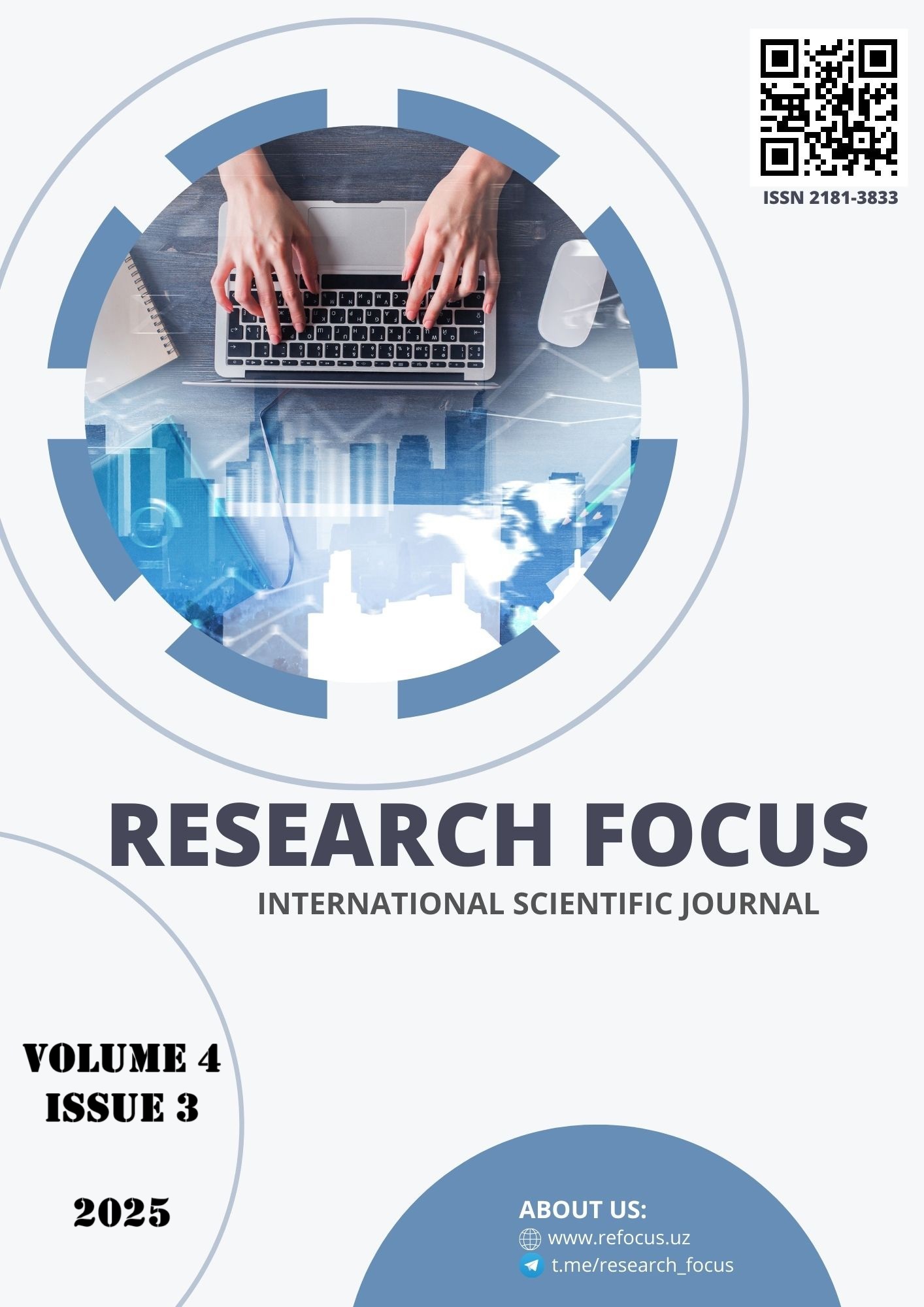STUDY OF THE ROLE OF ANTIMICROBIAL RESIDUE CONTAMINATION IN CHICKEN MEAT
Main Article Content
Abstract
The investigation aimed to assess bacterial contamination in 120 chicken meat samples collected from various retail marketplaces in Uzbekistan. Samples were analyzed microbiologically by isolating them on Agar medium, performing Gram's staining and enzymatic tests for confirmation. Antibacterial compounds were tested using the STAF procedure. The suspected Bacillus subtilis colonies exhibited specific characteristics like yellowish-brown color, smooth margins, and white curly growth, further confirmed by sheep blood agar growth and Gram staining. Biochemical tests confirmed Bacillus subtilis through catalase, gelatin hydrolysis, glucose fermentation, citrate utilization, and nitrate reduction tests. Microscopy revealed green spores and red bacterial cells. The study revealed significant antimicrobial drug residue contamination in chicken meat, likely due to antibiotic misuse or insufficient withdrawal periods. The presence of Bacillus subtilis in poultry meat indicates potential quality degradation and risks to human health. The research aims to enhance food safety policies by identifying contamination sources and antibiotic misuse, ultimately improving poultry product safety. This study not only benefits scientific understanding of microbial dynamics in poultry production but also contributes to reducing foodborne illnesses linked to contaminated meat.
Article Details

This work is licensed under a Creative Commons Attribution 4.0 International License.
References
Ur Rahman S & Mohsin M (2019). The under reported issue of antibioticresistance in food-producing animals in Pakistan. Pak Vet J 1: 1-16.
Berrazaga I et al. (2019). The role of the anabolic properties of plant-versus animal-based protein sources in supporting muscle mass maintenance: a critical review. Nut 11(8): 1825.
Haque MH et al. (2020). Sustainable antibiotic-free broiler meat production: Current trends, challenges, and Uzair et al. 223 possibilities in a developing country perspective. Biol 9(11): 411.
Castanon J (2007). History of the use of antibiotic as growth promoters in European poultry feeds. Poul Sci 86(11):2466-2471.
Liu L et al. (2021). Biological function of short-chain fatty acids and its regulation on intestinal health of poultry. Front in Vet Sci 8: 736739.
Etebu E & Arikekpar I (2016). Antibiotics: Classification and mechanisms of action with emphasis on molecular perspectives. Inter J Appl Microbiol Biotechnol Res 4: 90-101.
Nikolaidis I, Favini‐Stabile S & Dessen A (2014). Resistance to antibiotics targeted to the bacterial cell wall. Protein Sci 23(3):243-259.
Niewold T (2007). The nonantibiotic anti-inflammatory effect of antimicrobial growth promoters, the real mode of action? A hypothesis. Poul Sci 86(4): 605-609.

